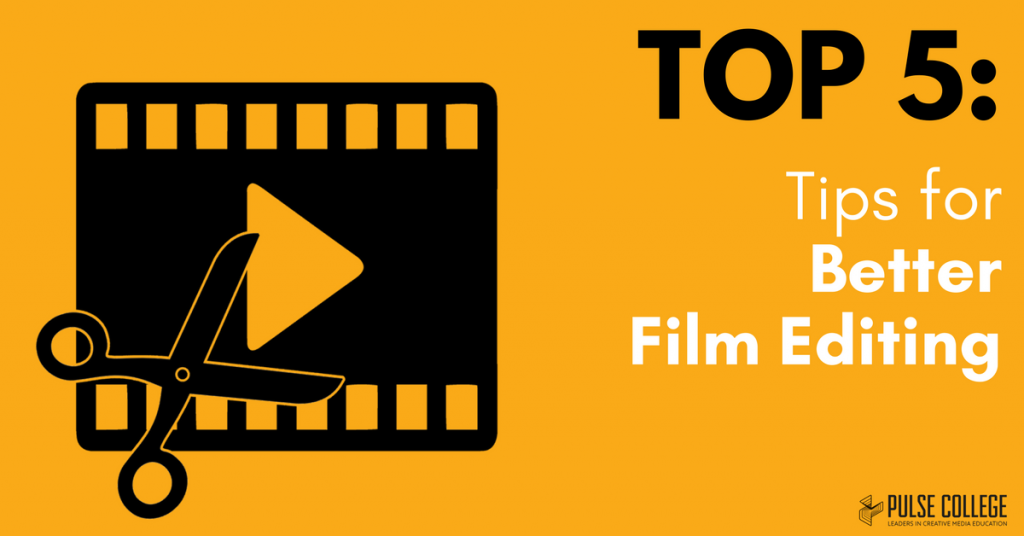
A good edit is hugely powerful and it can transform an ordinary film into an extraordinary one; making your work – literally – a cut above the rest! Many aspiring film makers have the mistaken impression that editing is just cutting out the footage that didn’t work out well. In fact there are lots of different aspects to great editing and it’s one of the most important processes in film production.
Editing forms a significant part of the creative post production process and it involves shot selection, adding effects, and ultimately finishing the movie for the big screen. Here’s 5 Tips for Editing Film to get you started.
1. Editing Mindset
When you’re starting out, you might find that you are both recording and editing your own work to build your experience. From an early stage, it’s important to develop an editing mindset – always shoot with editing in mind.
Here’s a few suggestions;
- Take lots of different shots
- Use wide angle
- Get close ups
- Take Arial shots
- Keep a steady hand!
You want to give yourself plenty of options so that you have lots of material to work with during the editing phase.
2. Get Organised
Now that you’ve finished filming it’s time to think about editing but before you begin it’s best to get yourself organised to produce your best work. If you’ve got a lot of material to work with – have your storyboard to hand to help structure the editing.
One important tip is to organise all your clips in a way that makes them easily identifiable. Make sure that everything is labelled properly in the software you’re using – that simple step will make it a lot easier to work through the filmed material.
There’s nothing more frustrating than having 1000’s of clips to work with and loosing track of what’s what – good labelling helps speed up the process and makes you much more efficient.
3. Cut the Junk
What we mean here is to start trimming out the beginning and ends off each clip and remove all shots that are unusable.
This’ll help tidy up all of the footage so that you can really begin to work on telling the story!
4. Tight Cuts
The most effective approach for editing tight cuts scenes is to make sure they don’t feel unnatural and too tight. Equally though you’ll want to remove any unwanted pauses between actors delivering lines in a conversation and tighten up any unnecessary gaps, that are adding no value.
Generally speaking, the best editors start with a fairly precise cut from beginning to end, as opposed to editing on an iterative basis. But bear in mind that most audiences struggle to hold their attention for longer than 90 minutes so if you end up with 100 minutes, it’s likely you can reduce it by 10 without losing any impact, often by removing non-essential bits of dialogue.
Don’t go crazy and start chopping away at the work because it may make the footage look jumpy.
And always save the longer shots as you go in case you need to roll back.
5. Kick Ass Effects!
Make your footage come alive by adding some effects. Play around with different ideas and see what happens. You can be creative here and achieve amazing things. Try adding music and sound effects as well.
Effects can draw in an audience but again be careful and don’t go over the top!
6. Feed the Beast!
Editing video is a pretty hungry process from a technical perspective – having lots of RAM and fast processors is important to manage all the footage and harness the power of the software. A good performing computer is an essential tool for a film editor.
Film Production Courses at Pulse College
If you’re interested in any of our film courses drop along to one of our open days and have a chat with our team or drop us a message online.
[openday]
FOLLOW US